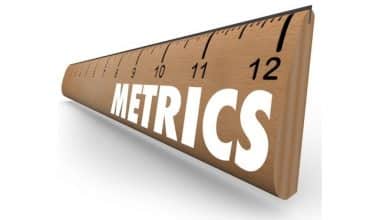Marketing research is the process of gathering and analyzing information from customers and rivals to assist businesses in discovering who their target audience is and what they are looking for in a brand. Additionally, good research can explore potential growth areas and offer insight into the efficacy of marketing initiatives. Marketing research covers a company’s entire marketing strategy, from building brand awareness to securing brand loyalists. You can gather and comprehend the data required to decide how to best meet your needs through the marketing research process, which consists of five steps. This article will guide you through the types of marketing research studies, their limitations, and how to best support you as you conduct your business market research.
What is Marketing Research?
As a producer or owner of a company, do you intend to launch a new product or service, but you are not sure what your customers want? You wonder why consumers are not buying your products, and you want to know why. It could be that you haven’t really explored a certain technique known as marketing research. Any firm that is serious about long-term success Incorporates marketing research.
It is the process of determining whether a new product is viable through interviews with potential customers. Organizations or businesses can use this technique to identify their target market, gather and record opinions, and make wise decisions.
You can conduct market research by using surveys, talking to samples of people, conducting interviews, and other similar methods.
Types of Marketing Research Studies
There are three main types of marketing research studies, and these are based on different approaches:
- Exploratory Research: Exploratory research is a preliminary research technique used to better comprehend undefined or poorly understood research problems. It assists businesses in determining the variables pertinent to the study and creating a hypothesis when utilized in marketing research.
- Descriptive Research: Descriptive research is used to comprehend the many variables being researched as well as their features. It is typically undertaken following exploratory research. Even though it doesn’t offer a rationale for why a phenomenon occurs, it does offer a deeper understanding of the phenomenon, making it possible to examine it more successfully.
- Causal Research: Causal research is utilized to determine the cause-and-effect connection between two variables—the independent and dependent variables. This is employed by businesses to determine how changing one variable may impact another. A price change’s impact on demand, for instance.
Steps in Marketing Research Process
The marketing research process consists of five steps that will help you gather and comprehend the data required to decide how to best satisfy your needs.
#1. Locating and Defining Problems
This step aims to clarify the parameters of a circumstance or concerns regarding a marketing strategy or implementation. The researcher should consider the study’s objectives, pertinent background knowledge, the information that is required, and how the information will be used in decision-making when defining the issues or problems.
#2. Designing the Market Research Project
This step focuses on developing a market research strategy, or broad approach, on how you’re going to address the identified issue or problem. When conducting a marketing research project, a research plan or approach serves as a framework or blueprint. It describes the steps required to gather the needed data, and its goal is to design a study that will test the relevant hypotheses, find potential solutions to the research questions, and offer the data required for making decisions.
The research design involves the following steps.
- Analyze secondary data
- Conduct qualitative research
- Choose the appropriate quantitative data collection techniques (survey, observation, and experimentation).
- Identify the required information’s definition.
- Establish measurement and scaling techniques.
- Design questionnaire
- Procedure for sampling and sample size
- Data analysis strategy
#3. Collecting Data
This step focuses on gathering the data you’ll require to address the issue or problem you’ve identified. Data collection is done by a field force or staff that works in the field, as in the case of personal interviews (in-home, mall intercept, or computer-assisted personal interviews), over the phone from an office (telephone or computer-assisted telephone interviewing), or through the mail (traditional mail and mail panel surveys with recruited households).
#4. Interpreting Research Data
This step focuses on reviewing and evaluating the information and drawing a conclusion that resolves. Going out to conduct research regarding a particular business or niche does not do the job for you. After conducting the research and collecting the data, it is now time to work with what you have to get to where you want.
#5. Report Research Findings
The last step is to inform those who require the information to make decisions about the results of the market research. In order to be effectively used in decision-making, the results should be presented in an understandable manner. Furthermore, to improve impact and clarity, a verbal presentation should be given to management.
Research reporting formats:
- Formal Paper
- Published Article
- PowerPoint Presentation
- Audio or Video
- Spreadsheet
What is Marketing Research used for?
Let’s look at the various goals of marketing research to better understand why it is used:
- To locate new markets for a good or service. It can be used to better understand the market and find new target markets for a product or service.
- To determine the most affordable price for a good or service. In order to determine the best price for a new good or service, marketers can use marketing research, which covers all activities involved in pricing research.
- To design plans. One of the main functions of marketing research is to provide organizations with a framework for the creation of marketing strategies and practices. A well-planned organization will produce better results.
- To recognize and assess external forces. Organizations can get useful information from marketing research about the outside factors influencing them. Marketing research helps organizations gain crucial knowledge about the external influences influencing them. However, this covers the many effects of the government, laws and rules, international trade, rival businesses, and consumer incomes.
- To Perform a Competitive Analysis. As part of marketing research, a variety of activities are carried out to better understand the competitors. For effective future planning, it can be crucial to have a solid grasp of competitors and their strategies.
- To have a better understanding of the market, Marketing research entails the gathering of enormous amounts of market-related data. This gives businesses a solid understanding of the market, facilitating improved decision-making.
Limitations of Marketing Research
Marketing research can help a company in many ways, but it does have some limitations:
This is the first thing to consider in all marketing research limitations because it has to do with the time consumed during the process. The amount of time needed to arrive at the final conclusions is excessive. The amount of time between the start and end of the investigation may be significant.
#1. Time Consuming:
This is the first of the limitations of marketing research because it has to do with time constraints. The amount of time needed to arrive at the final conclusions is excessive. The amount of time between the start and end of the investigation may be significant. Marketing executives can be impatient with the research study’s conclusions. Such research findings have not been known for a while. Too much time is spent on planning and implementing research programs. Therefore, market research does not provide immediate answers.
#2. Lack of Appreciating Rupee Value:
It may not always be easy to convert the value of marketing research into local currency. The management wants to see the findings of this research right away. Most of the time, they are interested in learning how this research may affect sales, revenue, etc. The effects of such an exercise might not be realized at once in terms of rupee value, but they might last for longer.
#3. Dependent on Information Collected:
Certain conclusions are based on the facts gathered during a research investigation. The study’s findings will be incorrect if the data used to get them is insufficient or untrustworthy. The gathering of accurate data has an impact on how reliable marketing research is.
#4. Limited Personnel:
A qualified team of people must conduct a marketing study for it to be successful. The qualified individuals needed to conduct research are not readily available. The studies are currently being carried out by those whose findings do not sufficiently help the company.
#5. Unpredictable Consumer:
The consumer is the center of attention throughout marketing research. To arrive at specific findings, his behavior, preferences, dislikes, and motivations are examined. Consumer behaviors are always changing, and it is impossible to accurately foresee these changes.
The research findings won’t be very useful if consumer quality can’t be accurately predicted. However, another drawback of marketing research is the unpredictability of consumer behavior.
What Is a Market Research Proposal?
A market research proposal is a document that sells the expected service to potential investors or clients. this document shows the clients what you can accomplish when hired.
Why Is Marketing Research a Process ?
Market research is a process because it involves various steps in marketing research such as researching your customers, business competitors as well as your business environment. Hence, the overall result determines where your business fits in the market.
What Are the 6 Steps of Marketing Research Process?
- Choose the right team
- Identify the important problem
- Determine the market research design
- Collect and analyze your data
- Interpret your results
- Incorporate your findings
What Is Marketing Research Process : Explain Its Process?
This process involves the collection of insights directly from the target audience and a secondary means. It is used to gauge the perceptions about your business. This process includes data collection, data analysis, survey, interviews, administering questionnaires, interpreting the results and making informed decisions.
What Are the Limitations of Research Process?
- Costly
- Time consuming
- Poor quality of data
- Limited scope
- Unpredictable consumer behavior
What Are the Benefits of a Good Research?
- In-depth understanding of prospects
- Data driven decisions are made
- Good research builds credibility
- Expansion of knowledge base
- It identifies opportunities and threats
- Identifies problem areas
- Minimizes losses
- Identifies target markets.
The Components of Marketing Research are?
- Data collection
- Pricing analysis
- Distribution channel analysis
- Interview processes
- Design
- Competitor analysis
- Location analysis
Conclusion.
In summary, there are various steps involved in carrying out successful market research. It involves identifying the problem, selecting an appropriate research design, collecting and analyzing your data, reporting your data as well as turning such results into strategies.
On the other hand , there are certain limitations that occurs in the process of carrying out the various steps involved in the research process. The cost involved acts as limitations of marketing research, as well as the time it takes to carry out the research.
There is no sure formula that can be employed to achieve an instant success when carrying out a research process, so it is advisable to always have a clear objective in mind . Find out what works for you and your business and use it.






